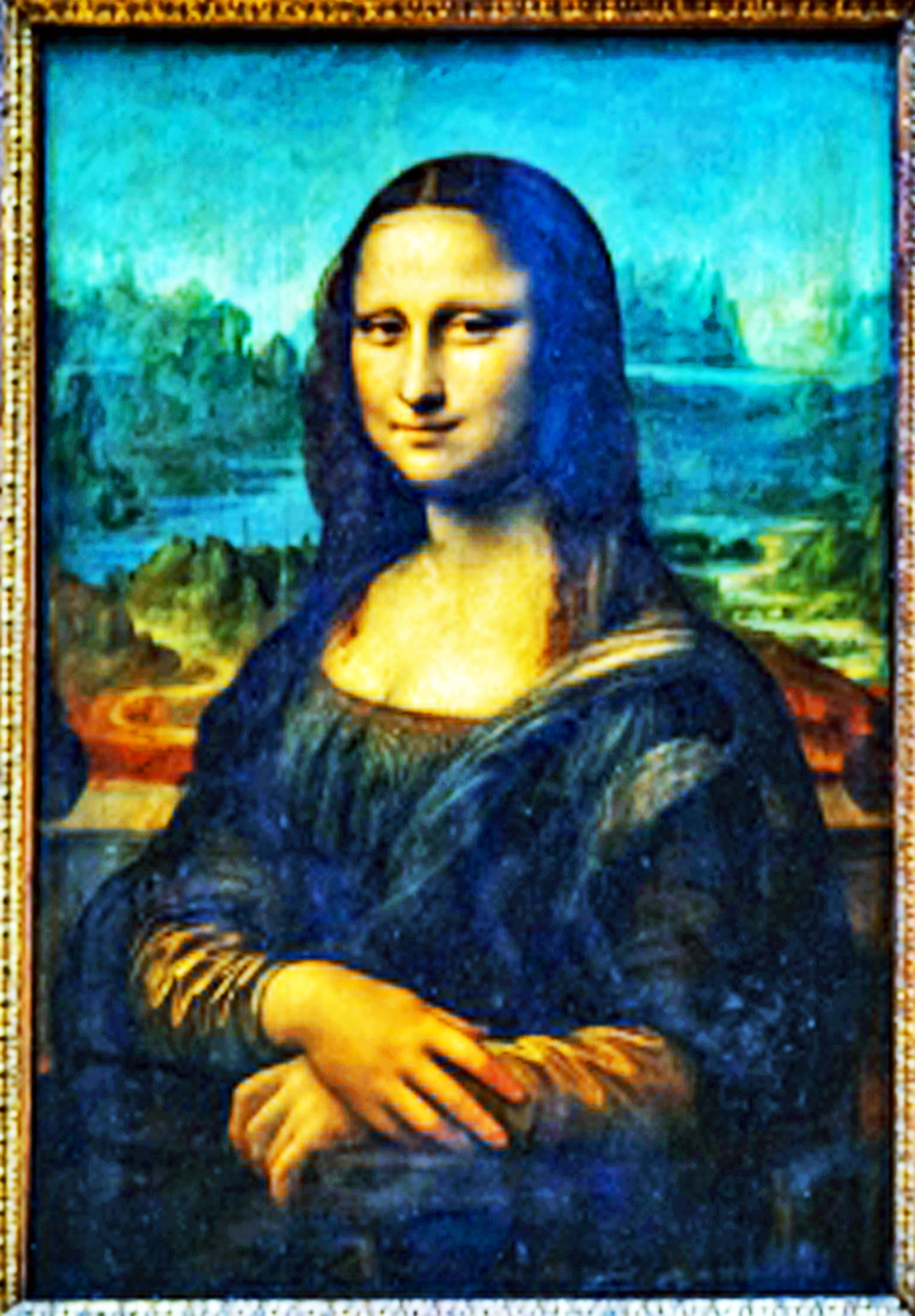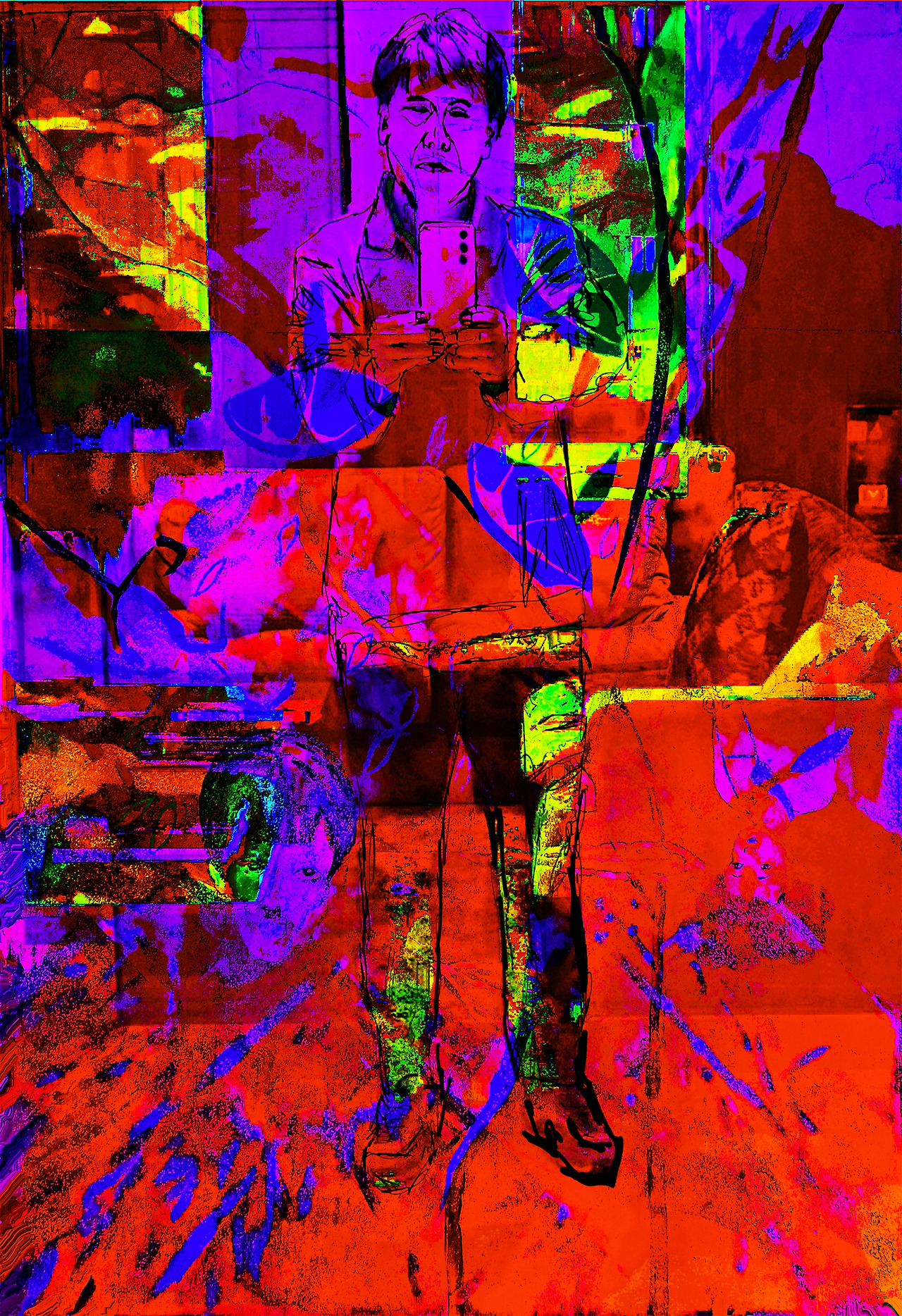미술평론 뉴스-명작읽기/ Art Review News - Reading Masterpieces: 현대미술 명작 평론 [6] 2025-<모나리자>: 최철주 미술 비평, 개념적 추상 리얼리즘 회화 디자인 과정을 통해 언어적 의미에서 욕망의 개념적 이미지로 해석 Choi Chul-joo Art Criticism, interpreted as a conceptual image of desire in a linguistic sense through a concep
미술평론 뉴스-명작읽기/ Art Review News - Reading Masterpieces: 현대미술 명작 평론 [6] 2025-<모나리자>: 최철주 미술 비평, 개념적 추상 리얼리즘 회화 디자인 과정을 통해 언어적 의미에서 욕망의 개념적 이미지로 해석 Choi Chul-joo Art Criticism, interpreted as a conceptual image of desire in a linguistic sense through a conceptual abstract realism painting design process / 페이스북과 인스타그램에 게시된 걸작 미술 비평: 현대 미술 평론가 루이 최철주 개념 추상 사실주의 회화 비평 Masterpiece Art Criticism Posted on Facebook and Instagram: Contemporary Art Critic Louis Choi Chul-joo Conceptual Abstract Realism Painting Criticisms: 현대미술의 이미지를 열어준 르네상스 미술에서 2025-<모나리자> In Renaissance art, which opened up the image of contemporary art, "2025-Mona Lisa"

Leonardo di ser Piero da Vinci, Mona Lisa, 77×53cm, Collection: Louvre Museum
현대미술의 이미지를 열어준 르네상스 미술에서 2025-<모나리자>
현대미술의 이미지를 열어준 르네상스 미술에서 2025-<모나리자>는 귀족에서 상인으로 확산된 미적 욕망을 말한다. 이것은 현대미술의 예술적 가치를 독점하는 타자의 욕망이 자리잡게 된다.
레오나르도 다빈치의 2025-〈모나리자〉는 단순한 르네상스 초상화를 넘어, 개념미술과 철학적 사유의 결정체로 해석됩니다. 그것은 “비실재 이미지의 정점”으로서, 욕망, 응시, 시간성을 비실재의 오브제를 언어적 의미의 휴머니즘 이미지를 연출한다.
그 욕망의 개념은 종교적 창조주의에서 벗어난 휴머니즘이다.
<모나리자>는 다빈치의 스푸마토(sfumato) 기법으로 살린 신비로운 이미지를 욕망의 배경인 으제에서 육화한 모나리자가 휴머니즘 욕망의 주체로서 색조로 한 신비로운 대기 효과를 넘어서 이미지로서 실재의 윤곽으로서 추상한다. 이것은 실재의 윤곽을 응시로 볼 수 있는 비실재 이미지의 오브제를 추상한다. 따라서 모나리자의 시선은 관람자의 위치에 따라 달라지는 착시를 유도한다.
그것은 라캉의 실재로서의 오브제를 응시 개념과 연결하여서 관람자가 보는 동시에 자신이 응시당하고 있다는 감각을 불러일으키는 “타자의 욕망이 반영된 거울 이미지”와 동일시한다.
그 추상은 왼쪽에 배경과 모나리자의 얼굴과의 안전적 욕망의 미적 효과로 자리를 잡는다.
이것은 스푸마토(Sfumato) 기법과 시간성으로 귀결한 “미소의 시간성” 이다. 다빈치의 스푸마토 기법은 윤곽을 흐리게 처리하여 모호한 표정과 시간성에 따른 미소의 감정을 중첩하여서 시간의 흔적을 시각화한 회화적 기술로서 “미소의 시간성”을 연쇄한다.
그 자리는 배경으로부터 오브제와 모나리자를 매체로 한 욕망 이미지를 반복하여서 가역적 빛의 음영으로 한 추상적 잔향(reverberation) 효과를 보인다.
그 추상적 잔향 효과로서 개념추상 리얼리즘의 초상화를 구성하여서 단순한 인물 묘사가 아닌, 존재와 부재, 실재와 환상의 경계를 탐구하는 철학적 회화가 된다. 이것은 모나리자의 미소가 고정된 감정이 아닌, 관람자의 욕망에 따라 변화하는 개념적 추상 구조를 이룬다.
그 잔향 효과로서 시선이 오브제에서 모나리자로 이어지도록 오브제 뒤에 욕망의 배경을 알맞게 두어서 욕망의 배경인 오브제에 시선을 모우고 욕망의 주체로서 모나리자의 얼굴로 시선이 이어지게 했다. 그리고 오브제에서 모나리자를 보는 위치와 마주보는 위치를 생성하여서 시선이 욕망의 주체인 모나리자로 향하게 한다.
이렇게 회화의 해부학적 구조를 구성한 다빈치는 모나리자의 얼굴을 해부하여서 얼굴 근육의 움직임을 만들어 모나리자의 미소라는 “회화의 해부학적 언어”를 만든다. 이것은 미소가 단순한 표정이 아니라, 미소가 근육과 신경의 움직임을 통해 구현된 시간적 감정의 흔적이다.
욕망 개념으로의 은유 모나리자는 오브제에서 욕망 이미지로 대치되면서 오브제는 욕망의 배경으로 구획(demarcation) 하는 의미 작용이 이루어진다. 여기서 욕망의 시선은 적색 윈도우가 프레임으로 구조화되어서 모나리자에 집중한다.
그것은 르네상스적 사고로서 욕망의 대상인 오브제를 알레고리로 한 욕망적 의미를 갖는다.
그 오브제는 나팔꽃 윈도우가 대상과 욕망에 대한 구획문제를 상징적 은유로서 텍스트의 의미로 해석하는 풍유적 의미(sensus allegoricus)로 한 욕망 이미지를 연쇄하여서 욕망의 대상을 상상계의 실재 이미지와 욕망 개념을 하나의 주체로서 실재의 이미지를 보이는 추상화다. 이것은 의미로서 대상의 이미지를 변질시키는 다다이즘의 개념미술과는 다르게 욕망의 대상을 실재화하여서 가역적 빛의 음영으로 주체의 욕망 구조를 실재한다.
현재의 시점에서 본 2025-〈모나리자〉는 단순한 명화가 아닌, 회화의 존재론적 의미를 철학적 텍스트의 이미지로 욕망 구조를 재구성한 개념추상 리얼리즘 회화이다.
실재로서 욕망 구조는 주체로서 모나리자가 오브제로 한 기호표현의 관계를 통하여 모나리자는 오브제에서 상징된 이미지로서 욕망 구조를 생성하는 원인의 대상이 된다.
욕망 구조와 실재 이미지와의 동시적 기능은 개념의 의미가 소급적 효과로서 욕망 이미지로 통합되고 그 이미지를 은유한 모나리자가 욕망 개념에 숨어 있는 근원적 이미지를 공시한다.
그 근원적 이미지로서 모나리자가 최초의 욕망 개념으로 공시되어서 의도적 추상으로서 상징적 개념추상 리얼리즘 이미지에 도달한다. /글. 미술평론가 최철주 (개념추상리얼리즘 화가 & 문화디자인박사)

Leonardo di ser Piero da Vinci, Mona Lisa, 77×53cm, Collection: Louvre Museum
In Renaissance art, which opened up the image of contemporary art, "2025-Mona Lisa"
In Renaissance art, which opened up the image of contemporary art, "2025-Mona Lisa (La Joconde)" refers to the aesthetic desire that spread from aristocrats to merchants. This is where the desire of the other to monopolize the artistic value of contemporary art is established.
The concept of desire is humanism, which deviates from religious creativity.
"Mona Lisa" abstracts the mysterious image saved by Da Vinci(Leonardo di ser Piero da Vinci)'s sfumato technique as the outline of reality as an image beyond the mysterious atmospheric effect of the color of the object, which is the background of desire.
Abstraction is established as an aesthetic effect of safe desire with object on the face of the Mona Lisa and a background on the left.
From the background, the image of desire mediated by object and Mona Lisa is repeated, showing an abstract reverberation effect in the shadow of reversible light.
As a reverberation effect, the background of desire were properly placed behind the object so that the gaze could lead from the object to the Mona Lisa, the background of desire, and the gaze was focused on the object and connected to the face of the Mona Lisa as the subject of desire.
And by creating a position facing the Mona Lisa in the obect, the gaze is directed to the Mona Lisa, the subject of desire.
The metaphor for the concept of desire The Mona Lisa is replaced with a desire image in the object, and the object is demarcated into the background of desire. Here, the gaze of desire focuses on the Mona Lisa with a red window structured into a frame.
As a Renaissance thinking, it has a desired meaning with the object of desire, as an allegory.
The object is an abstraction that shows the real world of desire as a subject by linking the image of desire with a sensus allegoricus that explains other meanings beyond the literal meaning, and the object window interprets the demarcation problem between objects and desires as a symbolic metaphor in the meaning of the text.
Unlike the conceptual art of Dadaism, which transforms the image of the object as meaning, this materializes the object of desire and realizes the subject's desire structure in the shadow of reversible light.
As a reality, the desire structure is the object, and the Mona Lisa becomes the object of the cause of creating the desire structure as an image symbolized in the object through the relationship of symbolic expression made by the Mona Lisa as a object.
The simultaneous function of the desire structure and the real image reveals the underlying image in which the meaning of the concept is integrated into the desire image as a retroactive effect, and the Mona Lisa, who metaphorized the image, hides in the desire concept.
As a fundamental image, the Mona Lisa is disclosed as the first concept of desire and reaches a symbolic conceptual abstract realism image as a deliberate abstraction. / Writing. Art critic Choi Chul-joo (conceptual abstract realism painter & Doctor of Cultural Design)
